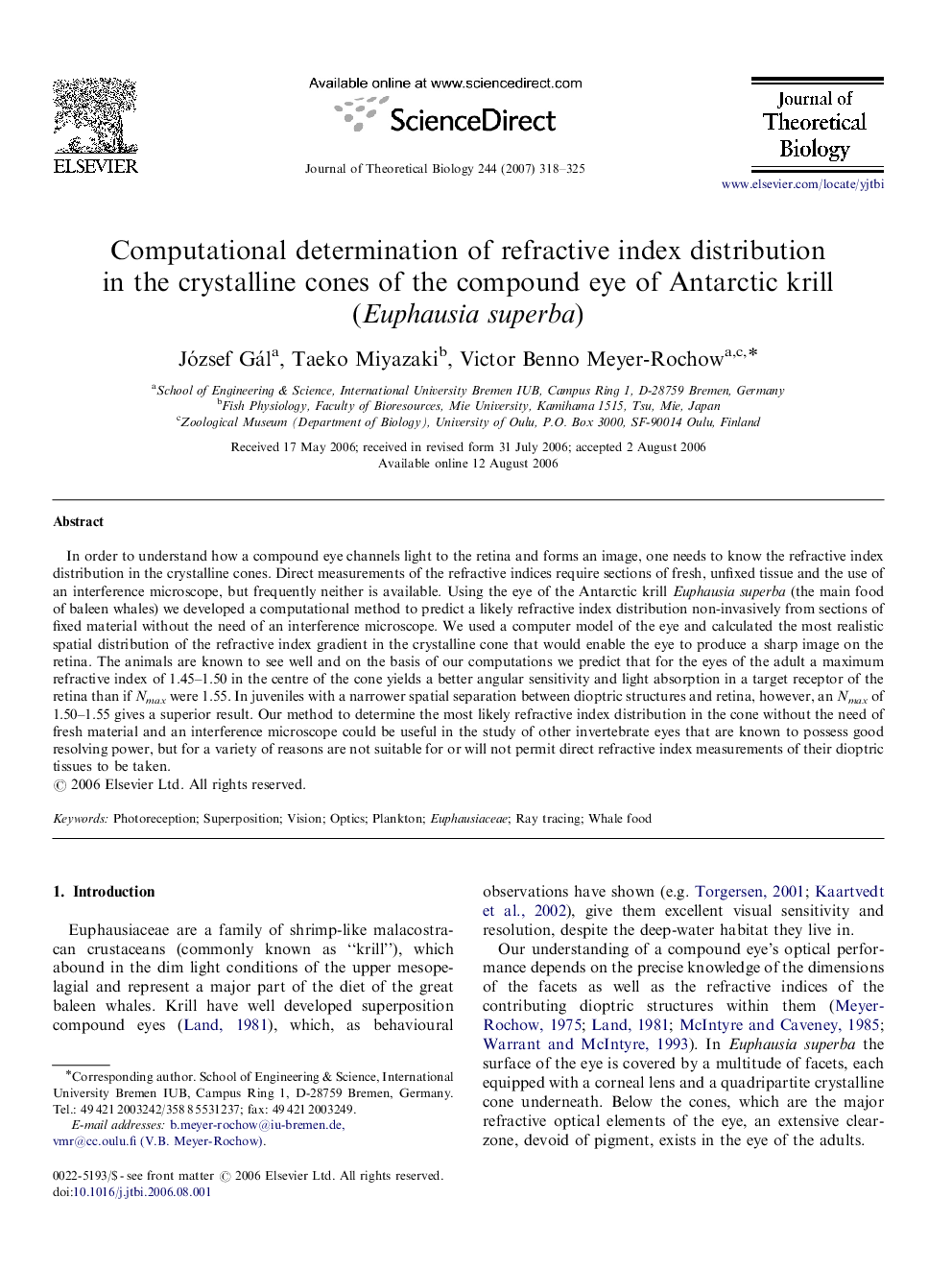| Article ID | Journal | Published Year | Pages | File Type |
|---|---|---|---|---|
| 4498963 | Journal of Theoretical Biology | 2007 | 8 Pages |
In order to understand how a compound eye channels light to the retina and forms an image, one needs to know the refractive index distribution in the crystalline cones. Direct measurements of the refractive indices require sections of fresh, unfixed tissue and the use of an interference microscope, but frequently neither is available. Using the eye of the Antarctic krill Euphausia superba (the main food of baleen whales) we developed a computational method to predict a likely refractive index distribution non-invasively from sections of fixed material without the need of an interference microscope. We used a computer model of the eye and calculated the most realistic spatial distribution of the refractive index gradient in the crystalline cone that would enable the eye to produce a sharp image on the retina. The animals are known to see well and on the basis of our computations we predict that for the eyes of the adult a maximum refractive index of 1.45–1.50 in the centre of the cone yields a better angular sensitivity and light absorption in a target receptor of the retina than if Nmax were 1.55. In juveniles with a narrower spatial separation between dioptric structures and retina, however, an Nmax of 1.50–1.55 gives a superior result. Our method to determine the most likely refractive index distribution in the cone without the need of fresh material and an interference microscope could be useful in the study of other invertebrate eyes that are known to possess good resolving power, but for a variety of reasons are not suitable for or will not permit direct refractive index measurements of their dioptric tissues to be taken.
